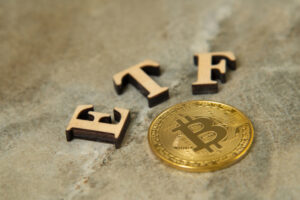Flow: The Future of NFTs and a Promising Financial Opportunity
The cryptocurrency market has experienced exponential growth in recent years, giving rise to numerous innovative projects. Among these, Flow and Gala have emerged as promising platforms in the gaming, digital art, and non-fungible tokens (NFTs) space. In this blog post, we will explore the world of Flow, its tokenomics, NFT system, and potential financial advantages of staking Flow tokens. Additionally, we will compare Flow with Gala to provide a comprehensive understanding of their differences and unique features.
Learning about Flow Tokenomics
The FLOW native coin, which is a key part of its multi-role proof-of-stake (PoS) blockchain, powers Flow. As a means of trade, a store of value, and a utility token for network functions including staking, governance, and transaction fee payments, FLOW fulfills a variety of functions.
The following is the distribution of Flow tokens:
Token sales: 24.5% Community & Ecosystem: 42% Team and Advisors: 17%
Foundation Reserve: 4% Mining Reserve: 12.5%
In order to promote a strong and sustainable ecosystem, the Flow team has designed a long-term distribution strategy, releasing the majority of tokens gradually over several years.
Examining the NFT System of Flow
Developers can build and scale their NFT solutions in a seamless environment thanks to Flow. Because of its user-friendly platform, it has drawn well-known partners including NBA Top Shot, CryptoKitties, and Ubisoft.
Scalability is made possible by Flow’s multi-node architecture, which divides the functions of consensus, execution, verification, and observation. This structure enables the development of a vibrant and diverse NFT ecosystem.
Flow’s NFT system has the following key characteristics:
Composable Smart Contracts: Flow’s Cadence smart contract language enables programmers to build highly reusable and composable NFT smart contracts, allowing the creation of intricate and feature-rich applications.
Secondary Sales and Built-in Royalties: Flow supports built-in royalties, allowing artists to receive a cut of secondary sales made from their NFTs. This offers a consistent source of income while encouraging artists to create high-quality work.
Interoperability: By encouraging cross-application interactions, Flow’s NFT system enables users to use their NFTs across many platforms, games, and applications. This improves NFTs’ value and promotes a thriving ecosystem of connected applications.
Gala vs. Flow Comparison
Gala and Flow both concentrate on the gaming and NFT industries, but they use distinct approaches and offer different things:
Use cases and the purpose:
With the FLOW token, network functions like staking, governance, and the payment of transaction fees are made possible. Flow is designed for gaming, digital art, and NFTs.
Gala: Concentrated on the Gala Games platform, the Gala token speeds up transactions, rewards gamers, and encourages game developers.
Blockchain Technology:
Flow: A distinctive multi-node design that supports a broad and robust NFT ecosystem while allowing for scalability.
Gala: Decentralized gameplay, player ownership, and a player-driven economy enabled by distributed ledger technology and node-based consensus.
Partnerships and the Ecosystem:
Partnerships with prominent gaming, entertainment, and technology firms and organizations, including NBA Top Shot, CryptoKitties, Ubisoft, and Samsung.
Gala: The creation of a number of blockchain-based games, including TownStar, Fortified, and Mirandus, as well as an open development environment for a wide range of games and applications.
The Business Chance: Staking Flow
For users and developers, staking Flow tokens offers a lucrative cash opportunity. Staking FLOW benefits network security while also paying off. The more tokens staked, the greater the likelihood of being chosen as a validator or delegator and earning incentives, according to Flow’s PoS consensus mechanism.
Users that stake Flow tokens also gain governance rights, which let them take part in decision-making and have an impact on the network’s future development.
Gala, on the other hand, uses its node system to provide cash opportunities. To help the network and receive incentives in the form of Gala tokens, users can run Gala nodes. Additionally, node operators have the chance to get limited-edition NFTs and take part in governance, helping to shape the Gala Games platform’s future.
Both Flow and Gala are cutting-edge blockchain platforms that have the ability to completely alter the gaming and NFT industries because to their distinctive architectures and user-friendly developer tools. While Gala focuses on decentralized gaming experiences and a player-driven economy, Flow’s strong ecosystem and connections with large brands position its NFT system as the go-to option for the next generation of digital assets. Gala is an appealing platform for both developers and gamers.
Users who want to support their particular networks and make money in the process have excellent financial potential with staking Flow tokens and running Gala nodes. The value of Flow tokens and Gala tokens is projected to rise as both Flow and Gala continue to expand and draw more projects and users, making staking and node operation even more alluring possibilities for investors.






